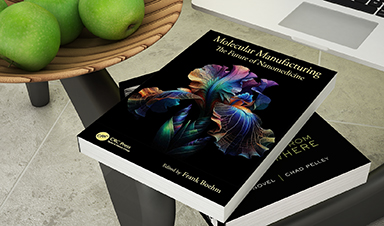Stanford Medicine researchers have developed a new method for influenza vaccination that encourages a robust immune response to all four common flu subtypes, potentially increasing the vaccine's efficacy.
In laboratory tests using human tonsil organoids, the modified vaccine showed promising results in combating both seasonal and bird flu strains. The approach involves a combined antigen methodology that might also protect against emerging flu variants with pandemic potential.
Innovative Flu Vaccine Development
Stanford Medicine scientists have developed a method to make seasonal flu vaccines more effective and potentially protect against emerging flu strains with pandemic potential. Their approach, demonstrated using cultured human tonsil tissue, was published in the journal Science on December 19.
Flu season is a serious health concern. Each year, influenza kills hundreds of thousands of people and hospitalizes millions worldwide. The seasonal flu vaccine helps by priming the immune system for a faster and stronger response. A critical part of this defense involves antibodies — specialized proteins that bind to the flu virus like puzzle pieces. When antibodies attach correctly, they block the virus from entering and multiplying in our cells.
Understanding Vaccine Antigens
Any classical vaccine displays, in a non-threatening way, one or more of a pathogen's immune-system-arousing biochemical features, or antigens, to various cells of the immune system whose job is to carefully note and memorize particular antigens belonging to the pathogen of interest — the one the vaccine targets. When the real thing comes along, that memory will kick in and rouse those otherwise dormant immune cells to jump up, pump up, and punch out the pest's lights — preferably before it can invade any cells.
Vaccine Design and Effectiveness
The influenza virus is studded with molecular hooks that it uses to latch on to vulnerable cells in our airways and lungs. This hook-like molecule, called hemagglutinin, is the principal antigen in the influenza vaccine.
The standard flu vaccine contains a mix of four versions of hemagglutinin — one for each of four commonly circulating influenza subtypes. The goal is to protect us from whichever of those subtypes eventually slips through our nostrils and takes up residence in our airways.
The vaccine's efficacy isn't as high as it could be, though. In recent years its effectiveness has ranged between about 20% and 80%, said Mark Davis, PhD, professor of microbiology and immunology and the Burt and Marion Avery Family Professor of Immunology.
That's largely because many vaccinated people fail to develop enough antibodies to one or more of the subtypes represented in the vaccine, said Davis, the study's senior author. The lead author is Vamsee Mallajosyula, PhD, a basic science research associate in Davis' lab.
Strangely, most of us develop a robust antibody response to only one of them, Davis said. But he and his colleagues have figured out why that happens and have found a way to force our immune systems to mount a strong antibody response to all four subtypes. That could make a huge difference in the vaccine's ability to keep us from suffering even mild consequences from influenza infections, let alone more severe ones.
Exploring Immune Response Mechanisms
It's widely believed that individuals' immune responses are partially due to what immunologists refer to, tongue in cheek, as "original antigenic sin," Davis said. "The idea is that our first exposure to a flu infection predisposes us to mount a response to whatever subtype that infecting virus belonged to. Subsequent influenza exposures, regardless of which viral subtype is now assaulting us, will trigger a preferential or even exclusive response to that first subtype." It's been thought that we're marked for life, immunologically speaking, by that initial encounter regardless of which subtype is bugging us now.
But that's not true. An analysis conducted by Mallajosyula showed that it's mostly our genes, not our first exposure, that push our immune systems to mount an antibody response to one or another of a flu shot's four subtypes. Mallajosyula found this uneven immune response to different influenza subtypes (what immunologists call "subtype bias") in most people, including 77% of identical twins — and 73% of newborns, who've had no previous exposure to the flu virus or the vaccine for it.
Davis' group has found a way to trick our immune systems into paying attention to all four subtypes represented in the vaccine. Here's how it works.
Overcoming Subtype Bias in Vaccines
B cells — the immune cells that serve as our body's antibody factories — are ultrapicky about exactly which antibodies they make. An individual B cell will produce only a single species of antibody fitting a mere one or very few antigenic shapes. That B cell is just as picky about what antigen it will pay attention to: that is, precisely the antigen the B cell's antibodies will stick to. When this antigen comes along, the B cell recognizes it and gobbles it up.
That's step one.
Next, the B cell chops the antigen up into tiny strips called peptides, which it displays on its surface for inspection by roving immune cells called helper T cells, whose follow-on stimulatory services are critical for turning antigen-displaying B cells into antibody-spewing B cells.
Helper T cells are just as finicky as B cells. A helper T cell will sprinkle its stardust only on B cells displaying antigen-derived peptides that particular T cell is designed to respond to — and even then, only when that peptide is gripped by one of the matching molecular jewel cases that B cells produce in myriad varieties.
But different peptides require different jewel cases. And depending on their luck in the genetic draw, people's repertoires of those specialized jewel cases vary from one person to the next, leaving many of us with plenty of the jewel cases that match peptides from one influenza-subtype hemagglutinin but far fewer of those that match another flu subtype's peptides.
In the standard flu vaccine formulation, the four antigens corresponding to the four common subtypes are delivered as separate particles in a mix. To overcome subtype bias, Davis, Mallajosyula, and their colleagues stitched all four antigens together. They designed a vaccine in which the four hemagglutinin varieties are chemically conjoined on a molecular matrix scaffolding. That way, any B cell that recognizes and begins ingesting one or another of the vaccine's four hemagglutinin types ends up wolfing down the entire matrix and displaying bits of all four antigens on its surface, persuading the immune system to react to all of them despite its predisposition not to.
Forcing B cells to "eat their broccoli" — internalize all four hemagglutinin subtypes instead of just the one that tastes best — effectively multiplies the number of B cells displaying hemagglutinin-derived peptides from every subtype on their surfaces, albeit still in a ratio skewed by the B cells' uneven inventories of jewel-case molecules.
This, in turn, makes helper T cells much more likely to stumble on a sample from the antigen they love to hate. They fire up, start multiplying feverishly, branch out in pursuit of any B cells displaying that antigen and spur antibody production in them. These selected B cells also proliferate, culminating in bulk production of antibodies that are likely to stop the influenza virus — whatever its subtype — in its tracks.
Testing the New Vaccine
Davis, Mallajosyula and their colleagues tested their four-antigen vaccine construct by putting it into cultures containing human tonsil organoids — living lymph tissue originating from tonsils extracted from tonsillitis patients and then disaggregated. In a laboratory dish, the tissue spontaneously reconstitutes itself into small tonsil spheres, each a "mini-me" that acts just like a lymph node — the ideal environment for antibody manufacturing.
Sure enough, B cells in these organoids that recognized any of the four conjoined hemagglutinin molecules swallowed the whole matrix and, potentially, displayed bits of all four subtypes, thus recruiting far more helper T cells to kick-start their activation. The result was solid antibody responses to all four influenza strains.
Addressing Pandemic Potential
There is considerable concern about a viral strain that could cause the next devastating pandemic: namely avian or "bird flu," which recently has been detected in wastewater and milk in California, Texas, and other parts of the United States. While this type of flu is not yet able to be transmitted easily between human beings, it could mutate to gain this ability and thus is considered a major risk-in-waiting.
The scientists further showed that they could substantially boost the antibody response to bird flu by vaccinating tonsil organoids with a five-antigen construct connecting the four seasonal antigens along with the bird-flu hemagglutinin, as opposed to getting a tepid response when vaccinating with just the bird-flu hemagglutinin or combining it with the four seasonal antigens on different constructs.
"Overcoming subtype bias this way can lead to a much more effective influenza vaccine, extending even to strains responsible for bird flu," Davis said. "The bird flu could very likely generate our next viral pandemic."
For more on this research, see Unlocking the Genetic Code to Supercharge Flu Vaccines.
Reference: "Coupling antigens from multiple subtypes of influenza can broaden antibody and T cell responses" by Vamsee Mallajosyula, Saborni Chakraborty, Elsa Sola, Ryan Furuichi Fong, Vishnu Shankar, Fei Gao, Allison R. Burrell, Neha Gupta, Lisa E. Wagar, Paul S. Mischel, Robson Capasso, Mary A. Staat, Yueh-Hsiu Chien, Cornelia L. Dekker, Taia T. Wang and Mark M. Davis, 19 December 2024, Science.
DOI: 10.1126/science.adi2396
Researchers from the University of Cincinnati College of Medicine contributed to the work.
Davis and Mallajosyula are co-inventors on a patent Stanford's Office of Technology Licensing has filed for intellectual property related to their coupled-antigen methodology.
The study was funded by National Institutes of Health (grants 5U19AI090019, 5U19AI057229, 5U01AI144673, 75N93019C00051 and U01AI144616) and the Howard Hughes Medical Institute.
News
Two New Books From Frank Boehm, NA Founder – To be Released Dec. 2025
Molecular Manufacturing: The Future of Nanomedicine This book explores the revolutionary potential of atomically precise manufacturing technologies to transform global healthcare, as well as practically every other sector across society. This forward-thinking volume examines [...]
What could the future of nanoscience look like?
Society has a lot to thank for nanoscience. From improved health monitoring to reducing the size of electronics, scientists’ ability to delve deeper and better understand chemistry at the nanoscale has opened up numerous [...]
Scientists Melt Cancer’s Hidden “Power Hubs” and Stop Tumor Growth
Researchers discovered that in a rare kidney cancer, RNA builds droplet-like hubs that act as growth control centers inside tumor cells. By engineering a molecular switch to dissolve these hubs, they were able to halt cancer [...]
Platelet-inspired nanoparticles could improve treatment of inflammatory diseases
Scientists have developed platelet-inspired nanoparticles that deliver anti-inflammatory drugs directly to brain-computer interface implants, doubling their effectiveness. Scientists have found a way to improve the performance of brain-computer interface (BCI) electrodes by delivering anti-inflammatory drugs directly [...]
After 150 years, a new chapter in cancer therapy is finally beginning
For decades, researchers have been looking for ways to destroy cancer cells in a targeted manner without further weakening the body. But for many patients whose immune system is severely impaired by chemotherapy or radiation, [...]
Older chemical libraries show promise for fighting resistant strains of COVID-19 virus
SARS‑CoV‑2, the virus that causes COVID-19, continues to mutate, with some newer strains becoming less responsive to current antiviral treatments like Paxlovid. Now, University of California San Diego scientists and an international team of [...]
Lower doses of immunotherapy for skin cancer give better results, study suggests
According to a new study, lower doses of approved immunotherapy for malignant melanoma can give better results against tumors, while reducing side effects. This is reported by researchers at Karolinska Institutet in the Journal of the National [...]
Researchers highlight five pathways through which microplastics can harm the brain
Microplastics could be fueling neurodegenerative diseases like Alzheimer's and Parkinson's, with a new study highlighting five ways microplastics can trigger inflammation and damage in the brain. More than 57 million people live with dementia, [...]
Tiny Metal Nanodots Obliterate Cancer Cells While Largely Sparing Healthy Tissue
Scientists have developed tiny metal-oxide particles that push cancer cells past their stress limits while sparing healthy tissue. An international team led by RMIT University has developed tiny particles called nanodots, crafted from a metallic compound, [...]
Gold Nanoclusters Could Supercharge Quantum Computers
Researchers found that gold “super atoms” can behave like the atoms in top-tier quantum systems—only far easier to scale. These tiny clusters can be customized at the molecular level, offering a powerful, tunable foundation [...]
A single shot of HPV vaccine may be enough to fight cervical cancer, study finds
WASHINGTON -- A single HPV vaccination appears just as effective as two doses at preventing the viral infection that causes cervical cancer, researchers reported Wednesday. HPV, or human papillomavirus, is very common and spread [...]
New technique overcomes technological barrier in 3D brain imaging
Scientists at the Swiss Light Source SLS have succeeded in mapping a piece of brain tissue in 3D at unprecedented resolution using X-rays, non-destructively. The breakthrough overcomes a long-standing technological barrier that had limited [...]
Scientists Uncover Hidden Blood Pattern in Long COVID
Researchers found persistent microclot and NET structures in Long COVID blood that may explain long-lasting symptoms. Researchers examining Long COVID have identified a structural connection between circulating microclots and neutrophil extracellular traps (NETs). The [...]
This Cellular Trick Helps Cancer Spread, but Could Also Stop It
Groups of normal cbiells can sense far into their surroundings, helping explain cancer cell migration. Understanding this ability could lead to new ways to limit tumor spread. The tale of the princess and the [...]
New mRNA therapy targets drug-resistant pneumonia
Bacteria that multiply on surfaces are a major headache in health care when they gain a foothold on, for example, implants or in catheters. Researchers at Chalmers University of Technology in Sweden have found [...]
Current Heart Health Guidelines Are Failing To Catch a Deadly Genetic Killer
New research reveals that standard screening misses most people with a common inherited cholesterol disorder. A Mayo Clinic study reports that current genetic screening guidelines overlook most people who have familial hypercholesterolemia, an inherited disorder that [...]





















